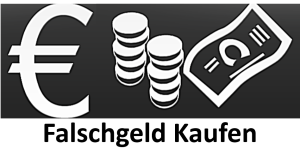Darrin Haverfield
The Intricate World of Buying Fakes: Understanding the Appeal and Risks
In an ever-evolving market influenced by consumerism and fashion patterns, the allure of counterfeit products-- frequently described as "fakes"-- has ended up being a topic of extensive argument. From luxury handbags and designer clothing to electronic devices and cosmetics, fake products catch a substantial portion of customer interest due to their perceived worth and cost. This post looks into the multifaceted world of buying fakes, exploring both the mental and social aspects driving this phenomenon, in addition to the prospective dangers connected with it.
The Appeal of Buying Fakes
Buying fakes is primarily driven by numerous essential motivators, consisting of cost, ease of access, status enhancement, and social impact.
1. Expense EfficiencyPrice: Fakes offer consumers with the chance to own products that are otherwise out of financial reach. A luxury purse that retails for ₤ 3,000 might be replicated and offered for a portion of the rate, making it appealing for people on a minimal budget plan.Perceived Value: Consumers might feel they are getting the very same quality and appearance as a high-end product without the large price, which is luring for many.2. Sociocultural FactorsStatus and Identity: For many, buying high-end brand names signifies wealth, success, or social status. Fakes allow individuals to predict a certain image without the monetary burden, lining up with their desired identity.Peer Influence: Social circles can play a substantial function in encouraging the purchase of fakes. Patterns often circulate within neighborhoods, leading individuals to do the same for fear of being socially ostracized.3. Ease of access and ConvenienceE-commerce Platforms: The rise of e-commerce, especially markets like Alibaba, eBay, and social media platforms, has actually made counterfeit products more available than ever. Customers can quickly browse and acquire fakes from the convenience of their homes.Worldwide Distribution: Counterfeit goods are readily available around the world, enabling access to items that might not be in your area offered.Types of Fake Products
When going over counterfeit goods, it's vital to understand that not all fakes are developed equal. The following categories typically encapsulate the kinds of counterfeit products offered:
A. Fashion ItemsClothes and Hochwertige FäLschungen Accessories: Imitations of designer clothing, shoes, and accessories are prevalent in the market.Luxury Handbags: Replicated high-end handbags often bring in considerable attention due to their recognizable branding.B. ElectronicsTech Gadgets: Counterfeit electronics, consisting of smart devices and devices, prevail, often marketed as premium brand names at a lower rate.Software application: Pirated software licenses and applications can likewise fall under the umbrella of counterfeit items.C. Cosmetics and Personal CareSkin care and Makeup: Counterfeit cosmetics can be particularly concerning due to security threats and regulatory issues associated with active ingredients.The Risks of Buying Fakes
While the attraction of counterfeit items can be strong, possible purchasers should think about the accompanying risks.
1. Legal ConsequencesCopyright Theft: Purchasing counterfeit items breaches intellectual home laws, and customers might be penalized depending upon regional legislation.Seizure Actions: In some countries, law enforcement firms have the authority to take counterfeit items and enforce fines on individuals captured acquiring them.2. Ethical ImplicationsAssistance of Criminal Enterprises: The counterfeit industry is typically related to the mob, and customer involvement can unintentionally support unethical practices and exploitation.Influence On Genuine Brands: The proliferation of fakes weakens legitimate businesses, negatively affecting their earnings and brand stability.3. Safety and Quality ConcernsBelow average Quality: Often, counterfeit items do not meet the quality standards of genuine products, which can lead to frequent discontentment.Health Risks: This is particularly real for cosmetics and electronics, which may consist of hazardous components or faults that posture security risks.Purchasing Fakes: A Concluding Perspective
The practice of buying counterfeit items is an intricate issue intertwined with financial, social, and ethical factors to consider. While enticing for numerous due to price and access to high-end aesthetic appeals, the negative effects expose the darker side of this customer habits. In a world where credibility is progressively valued, comprehending the threats and ramifications of purchasing fakes is essential.
Before making a purchase, individuals ought to examine their inspirations, the possible legal and ethical ramifications, and eventually choose what best aligns with their worths and financial stability.
Frequently Asked Questions (FAQs)Q1: Are counterfeit goods prohibited everywhere?
A1: The legality of counterfeit goods differs by country. While some nations impose rigorous laws against their sale and circulation, others might have more lenient regulations.
Q2: How can I determine counterfeit items?
A2: Look for dead giveaways such as bad workmanship, misspellings on labels, and price discrepancies that seem too good to be real. Researching genuine brand names can likewise aid in identification.
Q3: What should I do if I unconsciously buy a fake item?
A3: If you find that you have acquired a counterfeit product, consider connecting to the seller for a refund if possible. You may also report the item to regional customer security agencies.
Q4: Are there any advantages to buying fakes?
A4: While some argue that buying fakes can offer an opportunity to experience high-end products at a lower rate, it is important to weigh these perceived advantages versus the legal, ethical, and health threats involved.
Q5: How can I support ethical consumerism?
A5: Supporting ethical consumerism includes buying from reputable brand names, promoting for openness in the supply chain, and motivating responsible organization practices within your neighborhood.
By critically taking a look at the impulse to buy fakes, consumers can make educated choices that ultimately contribute to a more ethical and sustainable marketplace.
In an ever-evolving market influenced by consumerism and fashion patterns, the allure of counterfeit products-- frequently described as "fakes"-- has ended up being a topic of extensive argument. From luxury handbags and designer clothing to electronic devices and cosmetics, fake products catch a substantial portion of customer interest due to their perceived worth and cost. This post looks into the multifaceted world of buying fakes, exploring both the mental and social aspects driving this phenomenon, in addition to the prospective dangers connected with it.
The Appeal of Buying Fakes
Buying fakes is primarily driven by numerous essential motivators, consisting of cost, ease of access, status enhancement, and social impact.
1. Expense EfficiencyPrice: Fakes offer consumers with the chance to own products that are otherwise out of financial reach. A luxury purse that retails for ₤ 3,000 might be replicated and offered for a portion of the rate, making it appealing for people on a minimal budget plan.Perceived Value: Consumers might feel they are getting the very same quality and appearance as a high-end product without the large price, which is luring for many.2. Sociocultural FactorsStatus and Identity: For many, buying high-end brand names signifies wealth, success, or social status. Fakes allow individuals to predict a certain image without the monetary burden, lining up with their desired identity.Peer Influence: Social circles can play a substantial function in encouraging the purchase of fakes. Patterns often circulate within neighborhoods, leading individuals to do the same for fear of being socially ostracized.3. Ease of access and ConvenienceE-commerce Platforms: The rise of e-commerce, especially markets like Alibaba, eBay, and social media platforms, has actually made counterfeit products more available than ever. Customers can quickly browse and acquire fakes from the convenience of their homes.Worldwide Distribution: Counterfeit goods are readily available around the world, enabling access to items that might not be in your area offered.Types of Fake Products
When going over counterfeit goods, it's vital to understand that not all fakes are developed equal. The following categories typically encapsulate the kinds of counterfeit products offered:
A. Fashion ItemsClothes and Hochwertige FäLschungen Accessories: Imitations of designer clothing, shoes, and accessories are prevalent in the market.Luxury Handbags: Replicated high-end handbags often bring in considerable attention due to their recognizable branding.B. ElectronicsTech Gadgets: Counterfeit electronics, consisting of smart devices and devices, prevail, often marketed as premium brand names at a lower rate.Software application: Pirated software licenses and applications can likewise fall under the umbrella of counterfeit items.C. Cosmetics and Personal CareSkin care and Makeup: Counterfeit cosmetics can be particularly concerning due to security threats and regulatory issues associated with active ingredients.The Risks of Buying Fakes
While the attraction of counterfeit items can be strong, possible purchasers should think about the accompanying risks.
1. Legal ConsequencesCopyright Theft: Purchasing counterfeit items breaches intellectual home laws, and customers might be penalized depending upon regional legislation.Seizure Actions: In some countries, law enforcement firms have the authority to take counterfeit items and enforce fines on individuals captured acquiring them.2. Ethical ImplicationsAssistance of Criminal Enterprises: The counterfeit industry is typically related to the mob, and customer involvement can unintentionally support unethical practices and exploitation.Influence On Genuine Brands: The proliferation of fakes weakens legitimate businesses, negatively affecting their earnings and brand stability.3. Safety and Quality ConcernsBelow average Quality: Often, counterfeit items do not meet the quality standards of genuine products, which can lead to frequent discontentment.Health Risks: This is particularly real for cosmetics and electronics, which may consist of hazardous components or faults that posture security risks.Purchasing Fakes: A Concluding Perspective
The practice of buying counterfeit items is an intricate issue intertwined with financial, social, and ethical factors to consider. While enticing for numerous due to price and access to high-end aesthetic appeals, the negative effects expose the darker side of this customer habits. In a world where credibility is progressively valued, comprehending the threats and ramifications of purchasing fakes is essential.
Before making a purchase, individuals ought to examine their inspirations, the possible legal and ethical ramifications, and eventually choose what best aligns with their worths and financial stability.
Frequently Asked Questions (FAQs)Q1: Are counterfeit goods prohibited everywhere?
A1: The legality of counterfeit goods differs by country. While some nations impose rigorous laws against their sale and circulation, others might have more lenient regulations.
Q2: How can I determine counterfeit items?
A2: Look for dead giveaways such as bad workmanship, misspellings on labels, and price discrepancies that seem too good to be real. Researching genuine brand names can likewise aid in identification.
Q3: What should I do if I unconsciously buy a fake item?
A3: If you find that you have acquired a counterfeit product, consider connecting to the seller for a refund if possible. You may also report the item to regional customer security agencies.
Q4: Are there any advantages to buying fakes?
A4: While some argue that buying fakes can offer an opportunity to experience high-end products at a lower rate, it is important to weigh these perceived advantages versus the legal, ethical, and health threats involved.
Q5: How can I support ethical consumerism?
A5: Supporting ethical consumerism includes buying from reputable brand names, promoting for openness in the supply chain, and motivating responsible organization practices within your neighborhood.
By critically taking a look at the impulse to buy fakes, consumers can make educated choices that ultimately contribute to a more ethical and sustainable marketplace.
Made By East African Professional
 Italian
Italian
 हिन्दी
हिन्दी
 Arabic
Arabic
 Chinese
Chinese
 English
English
 French
French
 German
German
 Portuguese
Portuguese
 Russian
Russian
 Spanish
Spanish
 Turkish
Turkish

